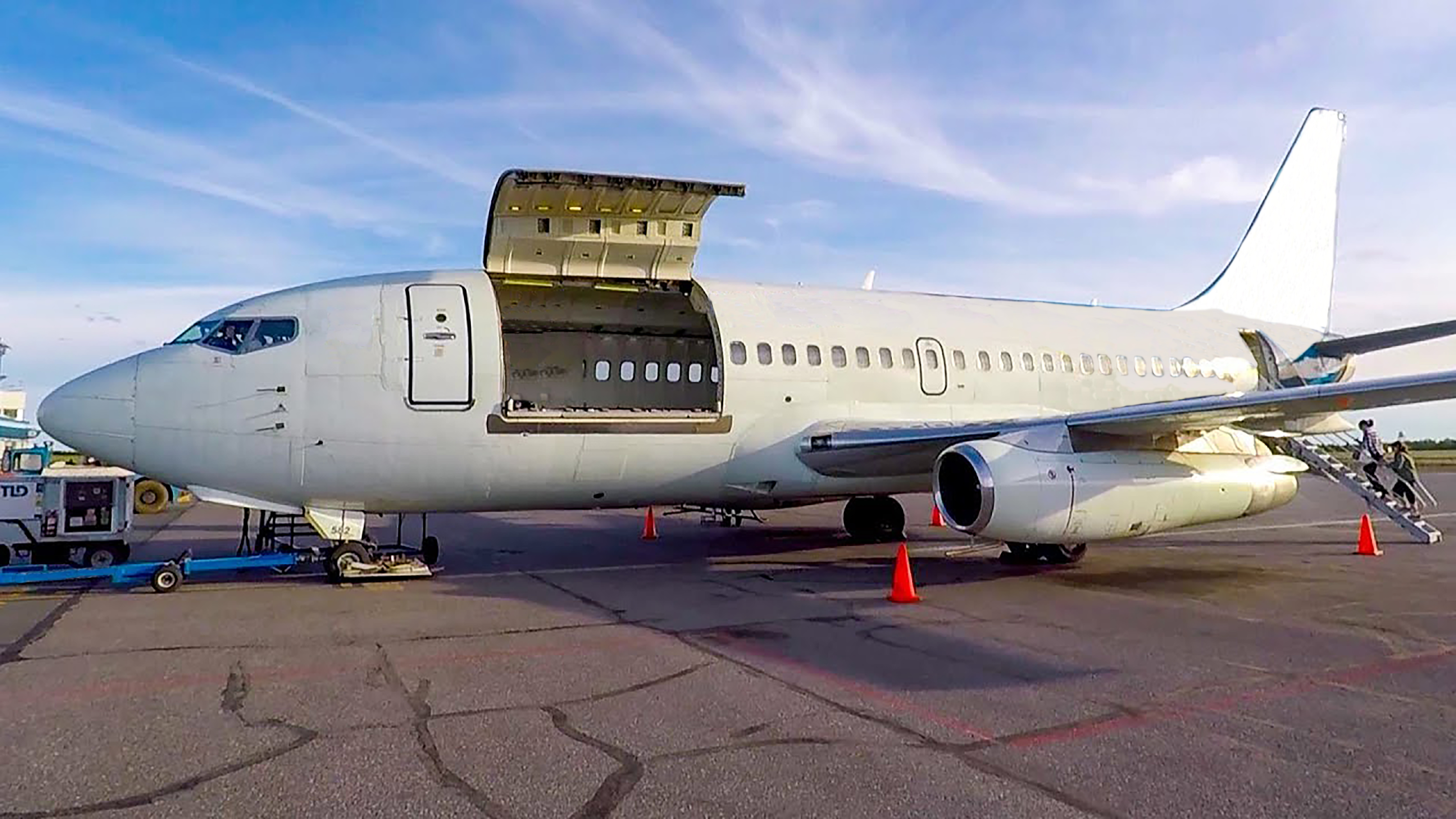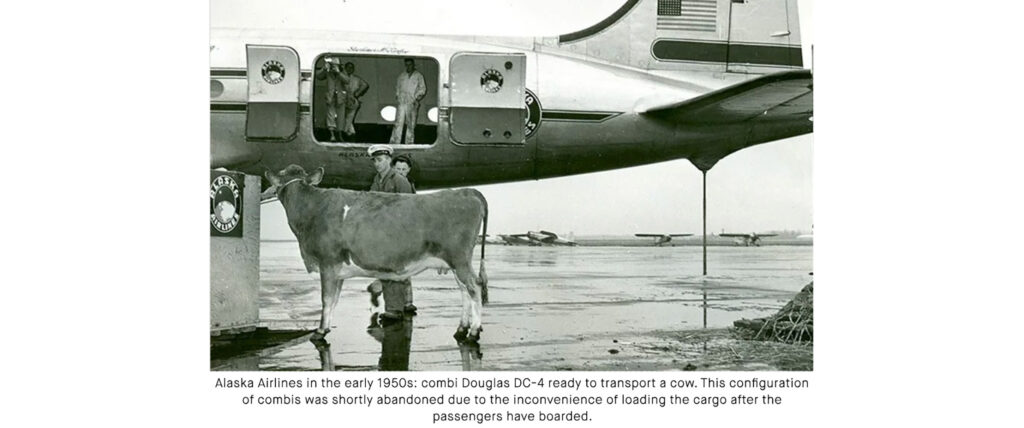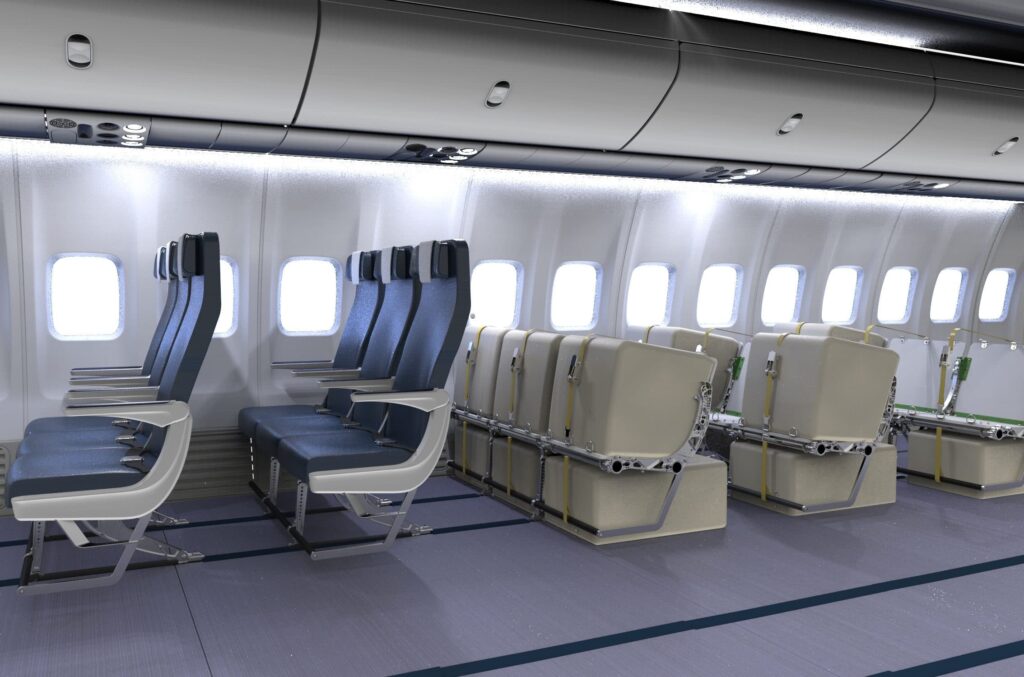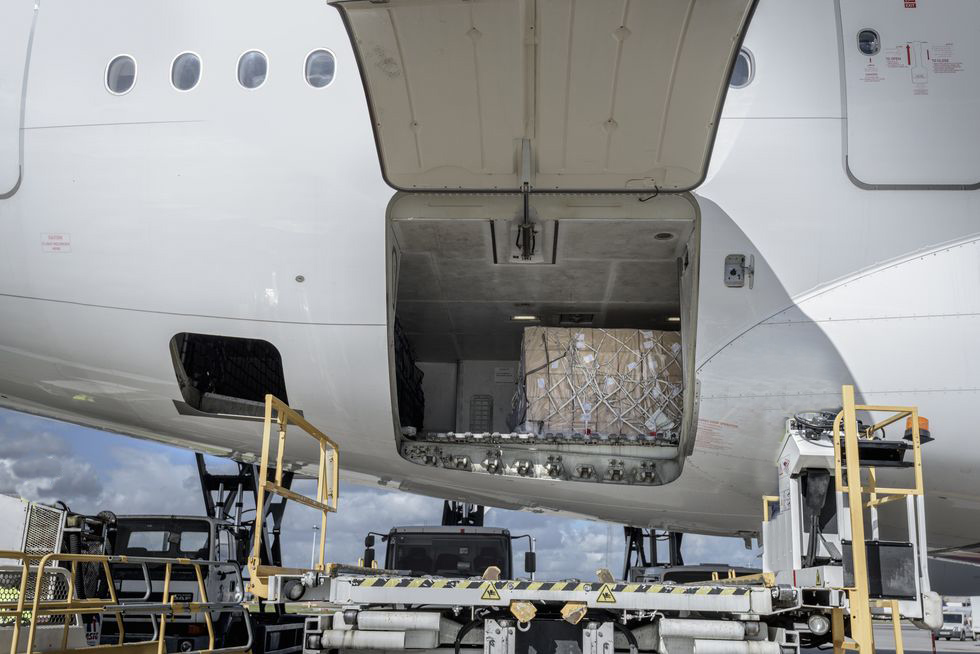Get to Know the 737 Combi: The Best of Both Worlds

Experience a Diverse Range of Options to Better Customize your Charter Flight.
—
For many airlines and air charter companies, fleets are typically broken out into passenger airliner and cargo freighter aircraft types, as their interior, load capacity, and many other parameters are distinct. However, one type of aircraft offers the capacity to carry both passengers and palletized cargo. Meet the Combi-type aircraft – the solution to many scenarios where passengers and large volume cargo can travel on the same plane.
What is a combi aircraft, what was the purpose of this variant previously, and how has it evolved over the years? Let’s dive into it!
What is a Combi-type Aircraft?
Combi-types are variations of popular passenger models that can carry full-load freight packed into pallets in the front body of the aircraft and passenger groups in the back. The combination of a freight-passenger load resulted in its name.

In the past, it was common for airlines on routes with low passenger and high cargo demand to include Combi-type aircraft within their fleet. Alaska Airlines flew the veteran combi B737-400 until 2017 on what is commonly known as the “Milk Run” – a multi-stop route from Anchorage to Seattle with fresh seafood and sensitive goods (even livestock).

For many airlines, combis have been servicing a wide range of needs for scheduled operations alongside client cargo requirements, as they allow for various passenger-cargo configurations. Depending on the number of cargo pallets travelling on a given route, the airplane can expand or reduce the size of the passenger compartment through the movement of a sliding bulkhead wall. Some of these aircraft are also ice strip equipped to land in remote locations, as well as on short and/or gravel runways.
As combi aircraft carry both cargo and passengers, the U.S. Federal Aviation Administration (FAA) applies special regulations to such a type, including higher safety standards, enhanced fire resistance requirements for the cargo compartment, and more.
How are Combis Different from Passenger Aircraft?
It’s true that all passenger airliners are capable of carrying some volume of freight below deck in the baggage hold(s). But in situations where there is a full passenger load – for example, during peak seasons en-route to destinations with limited scheduled flights, the availability of space for cargo can be greatly reduced or eliminated entirely.
“Combi aircraft have smaller belly dimensions, allowing for easy forklifting of palletized cargo through a larger-than-normal side door,” highlights Claudio Zompanti, Momentum Solutions Director of Operations. “They also have rows of removable passenger seats and a skid plate for landing on gravel runways. Ideal for North regions with uneven landing surfaces, these planes also transport fuel with ease.”
When there is a task where passenger aircraft need special conditions to take off and land, a combi airplane is prepared to go.
Why is it a Revival Time for the Combi-Type?
A few years ago, the Combi-type aircraft was predicted to fade into history, but has experienced a rebirth with the rise of e-commerce and the development of new routes in Asia and Africa. New Bombardier combi aircraft entered operations in Japan, while PEMCO rebuilt Boeing aircraft to FlexiCombi types to operate in the Middle East.
These days, apart from those airlines known to operate combi types in their fleet, organizations known to fly combis are the U.S. Navy and the United Nations Humanitarian Air Service.
Of further interest for many is that Combi-type aircraft deliver a very adaptable and cost-effective charter alternative.
Who can Benefit from Flying a Combi Aircraft?
There are several reasons why combis are a versatile solution for chartering, specifically transporting passenger groups. Momentum Solutions is one of the largest suppliers of passenger and cargo charters globally and our charter experts have identified several scenarios where Combi-type aircraft are particularly advantageous.
Entertainment Industry
Organizing group charter travel becomes complex when passengers fly with oversized and fragile luggage. The entertainment industry often has a demand for the transport of such specialized passengers and cargo. Combi-type airplanes offer a unique and ideal model for transporting orchestra groups in the aft section, while their instruments are stored in secure, fire and water-resistant cargo pallets up front.
The mode of transportation can also benefit film crews, thanks to the adaptability of the cargo compartment in order to transport the necessary volume of cargo.
Medical and Science
Given the flexibility of the ratio between freight components and passenger seating, combi aircraft can transport both medical staff and equipment for humanitarian and research purposes.
Combi-types are especially useful in ad-hoc missions, when the load on the return flight may differ from the first flight leg.
During the COVID-19 pandemic, many airlines used their passenger fleet to carry medical equipment to affected areas, dealing with conditions where the cabin was not equipped to transport sensitive cargo and had insufficient safety parameters. Combi-type airplanes allow the safe carriage of high-cost medical equipment.
Non-Profit Organizations
Similar to the medical industry’s needs, non-profits can use the flexibility of passenger-freight capabilities provided by combi aircraft chartering. This aircraft type creates a unique opportunity to transport humanitarian cargo and volunteers, specialists, and organization representatives in one flight.
Given the technical specifications of combi airplanes, they can also land and take off in regional airports, which is essential for aid-carrying missions heading to remote locations.
Remote Workforce
Combi aircraft become an ideal means for transportation of crews to remote natural resource extraction camps like mining and logging. As they can easily land on gravel runways, a Combi-type airplane can shuttle passengers and cargo between these often temporary camps.
Expeditions of such a kind will also benefit from the flexibility of the ratio of freight and passenger compartments, as the plane can be adjusted for specific flight payloads without the need to return to the base airport.
Sport
Often sports teams need to charter aircraft for transporting athletes with their equipment. And as in many other situations, combi aircraft becomes the only alternative to sending freight by land. For example, motorcycles, bobsledding equipment, or the like can be securely stored in cargo pallets and fly short and long-haul to international tournaments.
There are many occasions when the sports industry would benefit from chartering combi aircraft, especially given the varying size of the passenger load depending on the sport, and the mix of equipment and cargo that often must travel with a team.
Types of Combi Aircraft
Just 30-40 years ago, all major aircraft manufacturers produced Combi-types of the standard models. Even the B747 ‘jumbo jet’ had a combi-variation, one of which was known to be in operation within the KLM fleet until 2021.
Momentum most commonly charters two types of combi aircraft:
Boeing 737-200

Passenger capacity: 112
Cargo load: Up to 6 pallets
Maximum payload: 13,000 kg (29,938 lbs)
Average main cargo door size: 134 x 84″
Boeing 737-300

Passenger capacity: 136
Cargo load: Up to 3 pallets
Maximum payload: 14,240 kg (31,394 lbs)
Average main cargo door size: 134 x 84.5″
When contracting air charter services for the transportation of both freight and passengers, combi aircraft can become a cost-effective and versatile solution. It also offers a unique opportunity to fly with the legendary aircraft type that shaped how the transportation of cargo by air has evolved over the course of the past century.
Is the Combi aircraft a good fit for you? Momentum Solutions is a trusted air charter service supplier, providing industry leading charters and logistics coordination for passenger and cargo air charter, flying for over 25 years. Contact us today to explore how our flexible, customized solutions can make all the difference for your business.
About Momentum Solutions
Based in Toronto, Canada, Momentum Solutions is an inter-connected global network of leading strategic support companies. As a full-scale solutions provider, Momentum is the partner of choice in the safe and effective commercial and expeditionary delivery of people, cargo and life sustaining services globally.
—
Connect with Momentum Solutions:
Email: sales@momentumds.com
Web: www.momentumds.com
LinkedIn: https://www.linkedin.com/company/momentum-solutions-inc
………………..
Interested In Learning More?
Our 24-hour contact service is ready and willing to help. If you have any messages, please contact them with the information below.
Please direct all media inquiries to: media@momentumds.com
Phone: 1-647-792-0478


